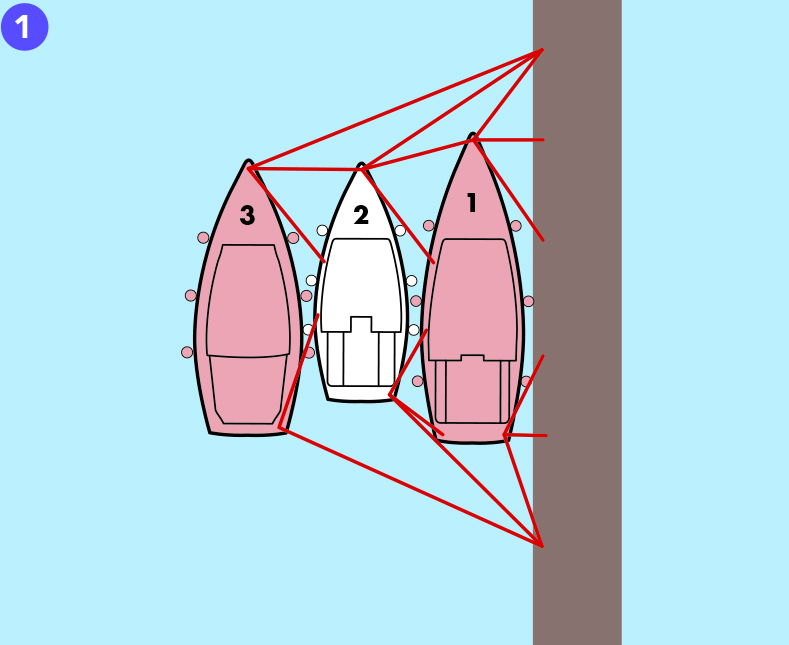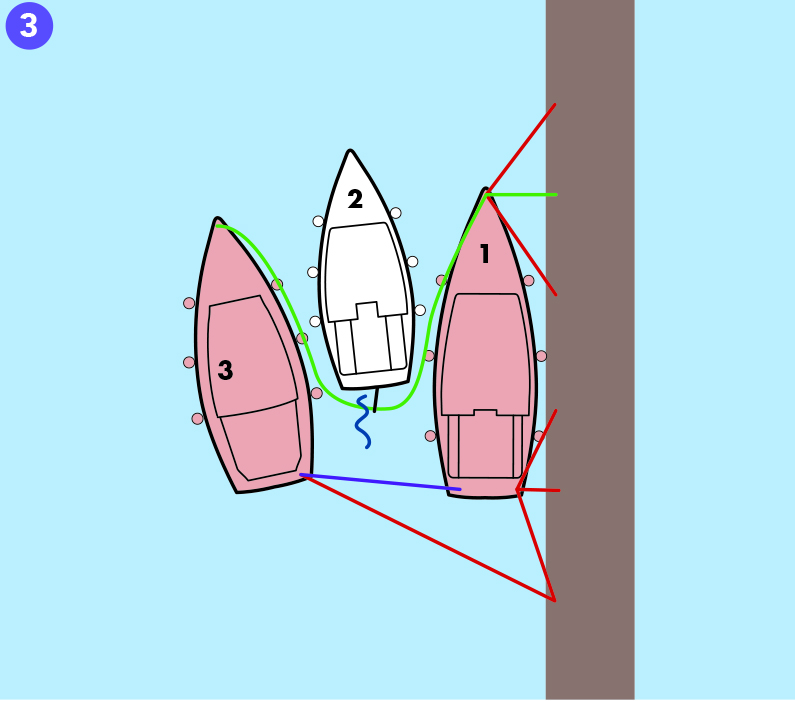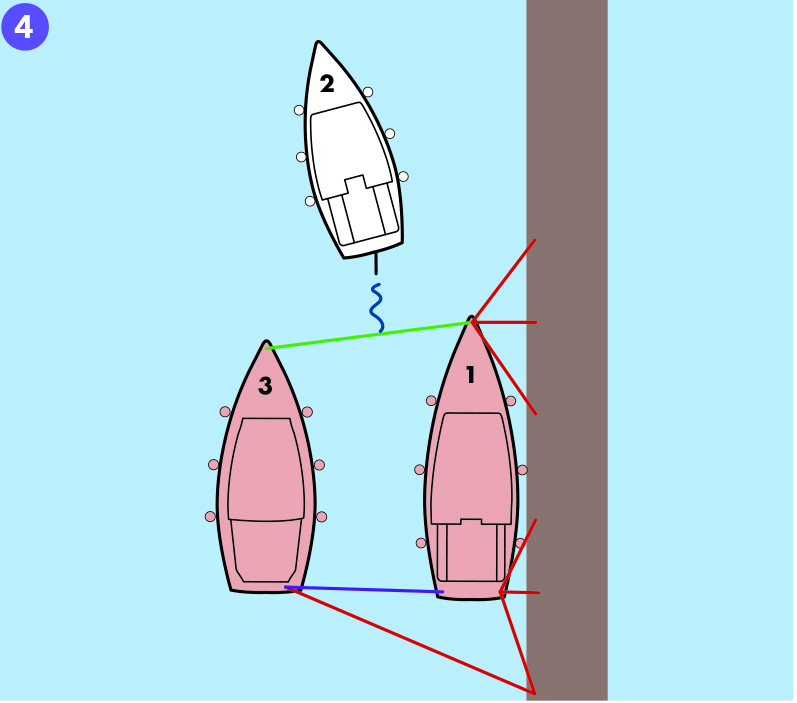Leaving A Raft Of Boats
Book Extract
Unless you are the outside boat, sailing off a raft of boats can be a nightmare. It will nearly always require the assistance of others. This should be arranged well in advance and everyone must be fully aware of your intentions and the role they are to play. This may require some negotiation.
If you are the outside boat but one it is usual for the outside boat to take off their bow shore line and put lines onto the boat inside you with their bow line going round your stern outside of everything. Their bow then blows, or is pushed, off, opening a gap for you to sail through. You slip your lines and drive out while the crew of the outside boat pull on their lines until they lie nicely alongside the boat that was inside you.
If you are buried deep inside a raft with rafts of boats ahead and astern it is impossible to drive out and, to add to your problems, there will be a huge tangle of shorelines between you and open water.
The procedure for freeing yourself from the boat immediately outside you is exactly the same as above. The difficulty he faces of hauling in himself, and all the other boats outside him, once you are free is his, not yours. Your problem is the huge number of shore lines between you and open water and the fact that the lack of space between your boat and those in the raft ahead probably makes warping out the only sensible solution.
Warping out is a hangover from the days when engine-less square riggers moved around harbours and other confined spaces and gives nautical respectability to moving your boat about the harbour by hauling on lines taken ashore or to other boats. Lines at angles to the stern or bow permit manoeuvres to be carried out in a controlled fashion, which would be impossible under power.
The technique is simple. A line is led to the shore (or another boat) in the direction you wish to travel and made fast. Hauling on this line takes you where you wish to go. Paying out a stern line made fast to your starting point controls your rate of advance and allows you to stop at any time.
If you double all your lines so they can slip, and take enormous care in your preparations, it is just possible to warp out single-handed but, if you are using this technique to leave a raft of boats, you cannot manage alone. Shorelines of other boats must be taken off and then (once you are out) made fast again. These boats, which have dropped their shorelines to let you out, will be swinging to and fro, perhaps threatening others unless there are people around to haul on lines and fend off. This is usually done by those ashore. For you to do this once you are clear of the raft would be extremely difficult (and impossible when you are on your own boat heaving on lines). If you are concerned about troubling others, you can save your conscience with the thought that during your stay on the raft you helped others to leave. Once you are clear of the pontoon, box or raft (and in open but still protected calm water), stow all lines and fenders before proceeding to sea.

Rafting up in Funchal Harbour

With its warps, springs and shore lines every raft is a cat’s cradle of rope. If you are an inside boat, then some assistance is required to find a way through this maze.
Your first task is to arrange for crews from the boats on either side to be present when you sail.

A line from the bows of boat 3 is led outside of everything round the stern of boat 2 and made fast to the bows of boat 1 (green line).
Another line is led from the stern of boat 3 to the stern of boat 1 (blue line).
Start your engine.

Boat 2 removes all its lines, including shore lines.
Boat 3 removes all its lines except
(a) its stern shoreline
(b) the lines it rigged in step two.
Boat 3 normally begins to swing out, giving boat 2 enough space to begin motoring slowly out. Watch out for fenders becoming entangled.

As boat 2 motors clear, hauling on the lines rigged in step two pulls boat 3 up against boat 1.
In heavy winds, or if there are a number of boats outside of boat 3, this may require the lines being led to a winch.
Boat 2 finds clear water and stows its warps and fenders before heading out to sea.
© Not to be reproduced without written permission from Fernhurst Books Limited.
Short-Handed Sailing is written by Alastair Buchan. Alastair began sailing on the Clyde in the 1950s. In a Hurley 20 (20ft!) he has sailed single-handed round Britain and crossed the Atlantic twice. In a Dockrell 27 (27ft) he made a single-handed Atlantic circuit, from Britain to the USA via Venezuela and Cuba – and back home..